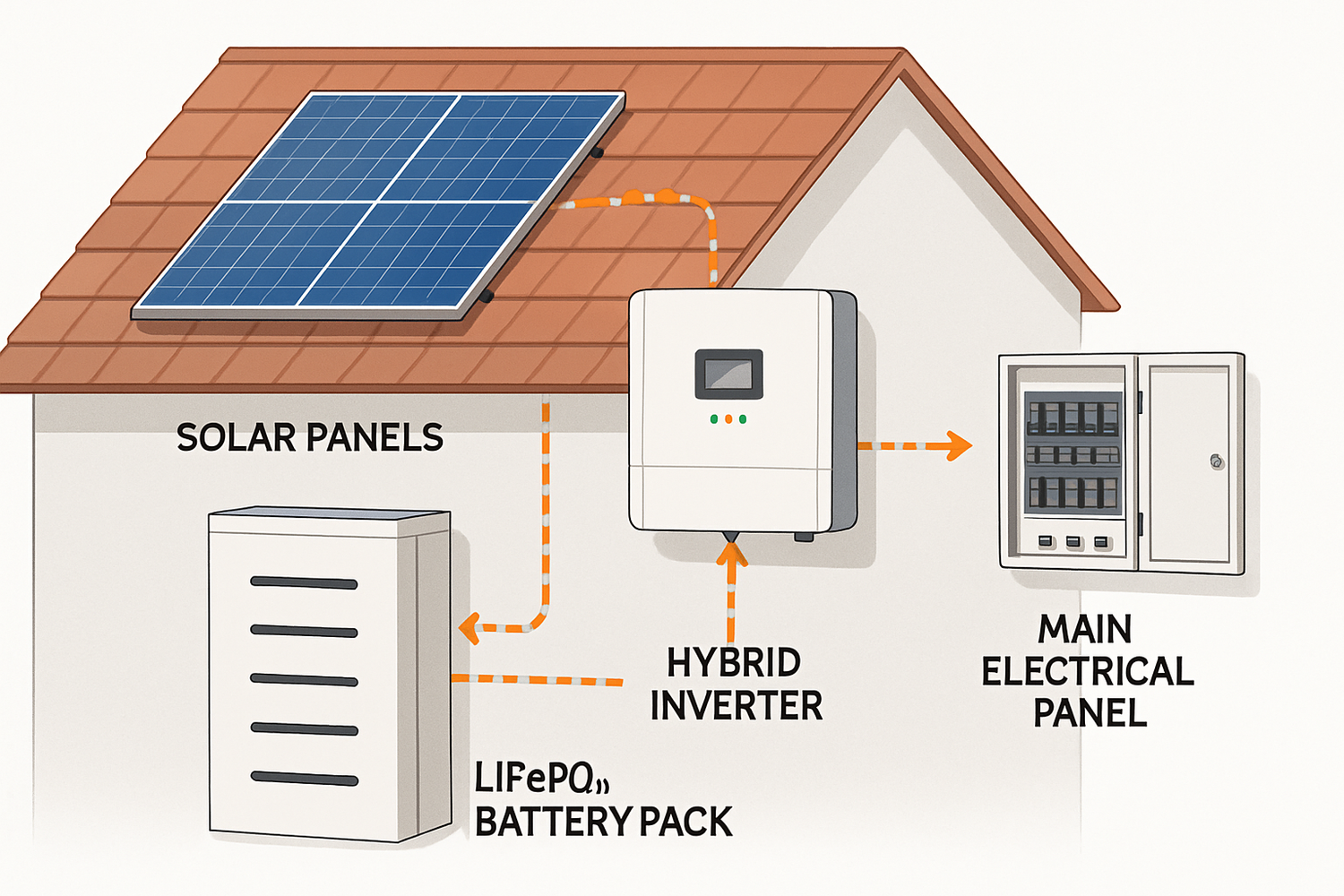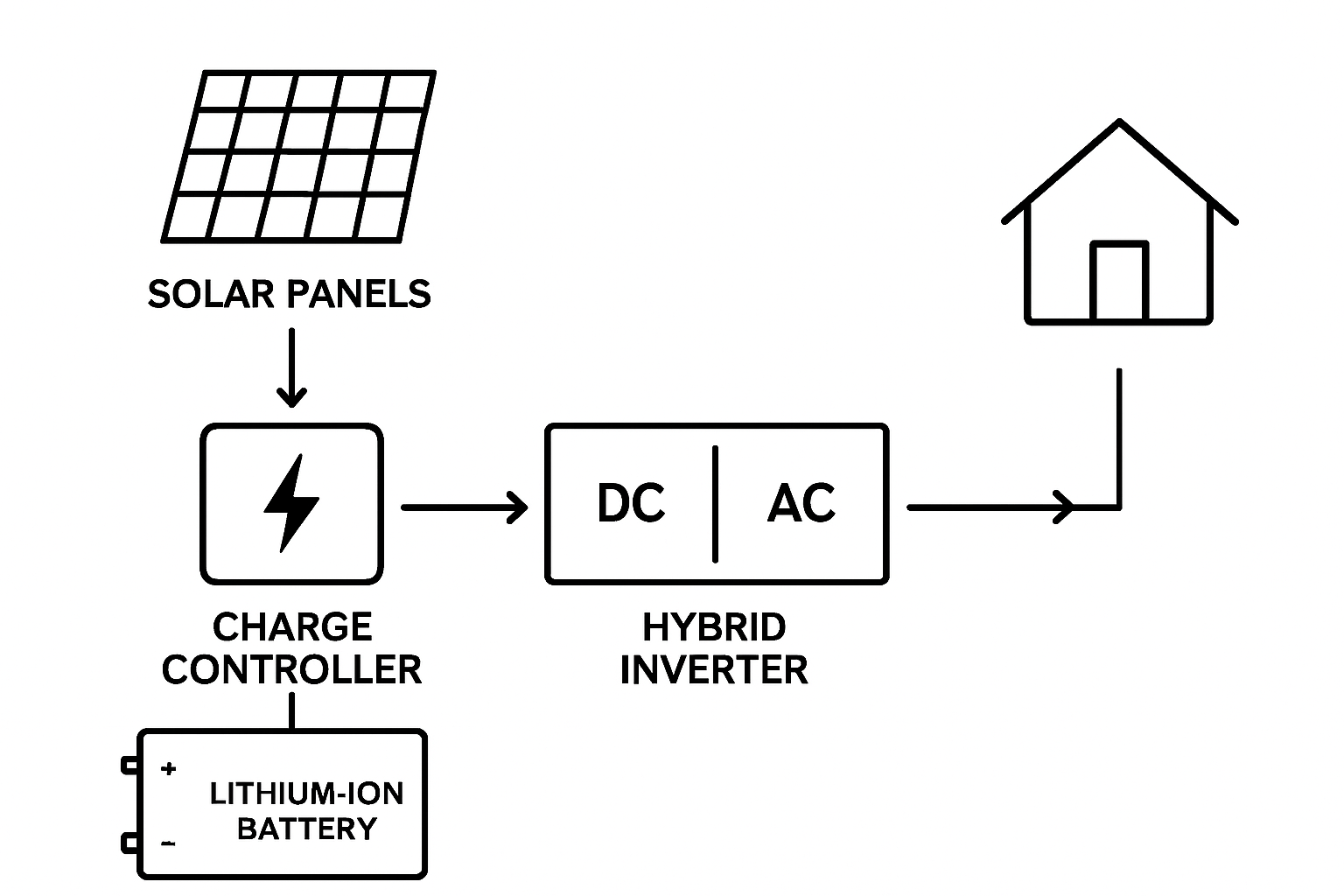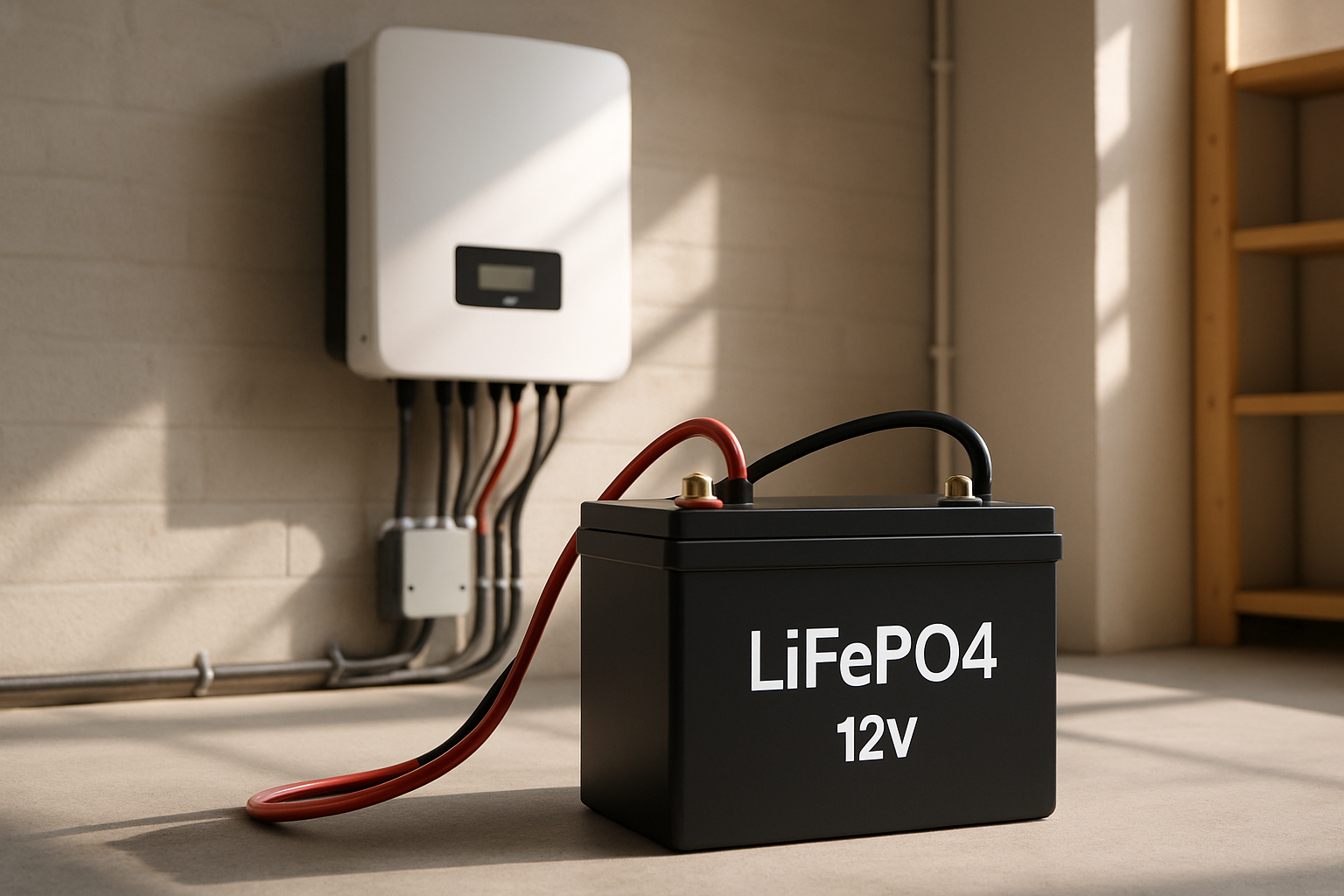A solar energy storage system diagram is the foundational roadmap for any successful solar power installation. It's more than just a drawing; it is a detailed plan that illustrates how every component connects and interacts to generate, store, and deliver power. For homeowners, installers, and DIY enthusiasts, a clear PV battery system schematic is indispensable for proper planning, safe installation, and effective troubleshooting. This blueprint ensures that your investment in energy independence is built on a solid, efficient, and reliable foundation.
Anatomy of a Solar Storage System
Before creating or interpreting a diagram, it's vital to recognize the core components. Each part has a specific role, and their interplay determines the system's overall performance and safety. A typical residential solar storage layout includes several key elements working in concert.
Solar Panels (PV Array): The Power Generators
The process begins with photovoltaic (PV) panels. These panels are the system's power generators, converting sunlight directly into Direct Current (DC) electricity. The way panels are wired together—either in series, parallel, or a combination of both—is a critical detail in any diagram. Series connections increase voltage, while parallel connections increase amperage. This configuration must match the specifications of the inverter and charge controller.
The Charge Controller: Protecting Your Battery
In systems with batteries, a charge controller is essential. It acts as a gatekeeper, regulating the voltage and current from the solar panels to the batteries. This prevents overcharging, which can damage the battery bank and reduce its lifespan. Modern diagrams often specify an MPPT (Maximum Power Point Tracking) controller, known for its higher efficiency compared to older PWM (Pulse Width Modulation) types.
The Battery Bank: The Heart of Storage
The battery bank is where the collected solar energy is stored for use at night or during cloudy days. Today, Lithium Iron Phosphate (LiFePO4) batteries are a leading choice for residential systems due to their long cycle life, inherent safety, and high efficiency. A well-designed diagram will specify the battery voltage, capacity (in amp-hours or kilowatt-hours), and the inclusion of a Battery Management System (BMS), which is crucial for protecting the battery cells from over-voltage, under-voltage, and extreme temperatures.
The Inverter: The Power Converter
Solar panels and batteries produce DC electricity, but most home appliances run on Alternating Current (AC). The inverter's job is to perform this conversion. In a solar power backup system design, a hybrid inverter is often used. This advanced device can manage power from the solar panels, the battery bank, and the utility grid simultaneously, directing energy where it's needed most.
Balance of System (BOS): The Supporting Cast
The Balance of System (BOS) includes all the other components necessary for the system to function safely and effectively. This covers wiring, fuses, circuit breakers, disconnect switches, and mounting hardware. While often overlooked, these parts are critical for safety and code compliance. A poor quality BOS can negatively affect your panels' output and even pose safety risks.
Mapping Your Energy Future: System Layouts
Not all solar energy storage systems are the same. The optimal design depends entirely on your goals, whether it's reducing electricity bills, ensuring backup power during outages, or living completely off-grid. The diagram will look different for each of these scenarios.
Grid-Tied Systems with Battery Backup
This is the most common residential solar storage layout. The system is connected to the utility grid, allowing you to draw power when needed and send excess energy back. The addition of a battery provides energy security, keeping your essential appliances running during a grid failure. The diagram for this hybrid system shows power flowing from the panels to a hybrid inverter, which then intelligently decides whether to power the home, charge the batteries, or export to the grid. For a deeper comparison, see Off-Grid vs. Grid-Tied: Which System Diagram Is for You?
Off-Grid Solar Systems: Complete Energy Independence
For properties without access to the utility grid, an off-grid system is the solution. In this configuration, you are your own power company. The diagram for an off-grid system places a heavy emphasis on the battery bank and charge controller, as they are the sole source of power when the sun isn't shining. These systems must be meticulously designed based on a detailed load analysis to ensure reliability. Achieving this level of autonomy is a primary goal for many, as explored in Unlock Energy Independence: A Solar System Diagram Deep Dive.
AC-Coupled vs. DC-Coupled Systems
Within battery-based systems, there are two main architectural approaches: AC-coupling and DC-coupling. The difference lies in how the solar energy is routed and converted.
| Feature | DC-Coupled System | AC-Coupled System |
|---|---|---|
| Best For | New solar + storage installations | Adding a battery to an existing solar system |
| Efficiency | Higher (up to 98%), as power is converted only once from DC (panels) to DC (battery). | Lower (90-94%), as power is converted from DC to AC and back to DC for battery storage. |
| Components | Requires a single hybrid inverter to manage panels and battery. | Uses a standard solar inverter plus a separate battery inverter. |
| Installation Complexity | More integrated and streamlined for new builds. | Simpler to retrofit onto existing grid-tied solar systems. |
Blueprinting Your Own System
Moving from a conceptual understanding to a practical design requires careful planning and attention to detail. This involves sizing your system correctly, incorporating safety features, and learning how to read the schematics that bring it all together.
Sizing Your System Correctly
Proper system sizing is the most critical step in designing a solar power backup system. It begins with a load analysis—calculating your daily energy consumption in kilowatt-hours (kWh). You must also consider the peak power draw of your appliances and the number of "autonomy" days you need the system to run without sun. Understanding the real-world performance of your components is key. For instance, factors like Depth of Discharge (DoD) and round-trip efficiency directly impact your usable storage capacity. A detailed analysis of solar storage performance metrics shows how these variables affect long-term value and system reliability.
Safety and Protection Mechanisms
A safe system is a well-protected system. Every solar battery storage diagram must include safety devices like circuit breakers, fuses, and disconnects. These components protect your equipment from overcurrents and short circuits and allow you to safely de-energize parts of the system for maintenance. Ignoring these can lead to equipment failure or fire hazards. To learn about common design mistakes, review these 5 Key Flaws in a Home Battery Storage System Diagram.
Reading and Interpreting the Schematics
Learning to read a PV battery system schematic involves recognizing standard symbols for components like panels, batteries, inverters, and grounding points. The lines on the diagram show the path of electricity, typically with different styles for DC and AC wiring. By tracing these paths, you can understand how power flows from the source to your loads. For a detailed walkthrough, consult this guide on How to Read a Solar & Lithium Battery Storage System Diagram. Practical examples, like The Pro's Blueprint for a 12V LiFePO4 Storage System, can also provide valuable insight into real-world applications and what a Li-Ion Solar Battery Diagram Actually Reveal?. A Case Study: Diagramming a 100ah Lithium Ion Solar System can also be a helpful resource.
Evolving Designs in Solar Storage
The solar and storage industry is constantly advancing, with new technologies and policies shaping system design. Staying informed about these trends is key to building a future-proof system.
The Rise of Integrated Systems
To simplify installation and improve compatibility, many manufacturers now offer integrated energy storage systems (ESS). These all-in-one units typically combine the hybrid inverter, charge controller, and LiFePO4 battery into a single, sleek enclosure. This approach simplifies the system diagram significantly, reduces installation time, and ensures all components are designed to work together seamlessly.
Grid Interconnection and Policy Considerations
The way your system connects to the grid is influenced by local utility rules and national policies. The U.S. Department of Energy's *Solar Futures Study* projects a need to quadruple yearly solar capacity additions to reach 1,000 GW by 2035 to support a decarbonized grid, underscoring the vital role of energy storage in maintaining grid stability. As more solar is added, policies are evolving to manage this two-way flow of energy, making storage an increasingly important part of the equation.
Future Trends: Smart Homes and AI
The future of solar storage diagrams will likely include more "smart" components. The International Energy Agency (IEA) has noted that global energy storage capacity needs to increase six-fold by 2030 to support the growth of renewables. Innovations like AI-driven energy management systems will optimize when your battery charges and discharges based on electricity rates and weather forecasts. This enhances efficiency and savings, making the home energy system an active participant in a cleaner, more resilient grid.
Your Diagram, Your Energy Independence
A solar energy storage system diagram is far more than a technical requirement; it's the blueprint for your energy future. It translates your goal of energy independence into an actionable plan, ensuring every component works in harmony to deliver reliable, clean power. From the solar panels that capture sunlight to the high-performance LiFePO4 batteries that store it, a well-thought-out design is the key to unlocking the full potential of your system. By understanding the components, configurations, and design principles, you are empowered to build a solution that is not only effective but also safe and durable for years to come.
Disclaimer: The information provided in this article is for educational purposes only. It is not intended as financial, legal, or professional installation advice. Solar energy system design and installation should be performed by qualified professionals in compliance with all local codes and regulations.





Leave a comment
All comments are moderated before being published.
This site is protected by hCaptcha and the hCaptcha Privacy Policy and Terms of Service apply.